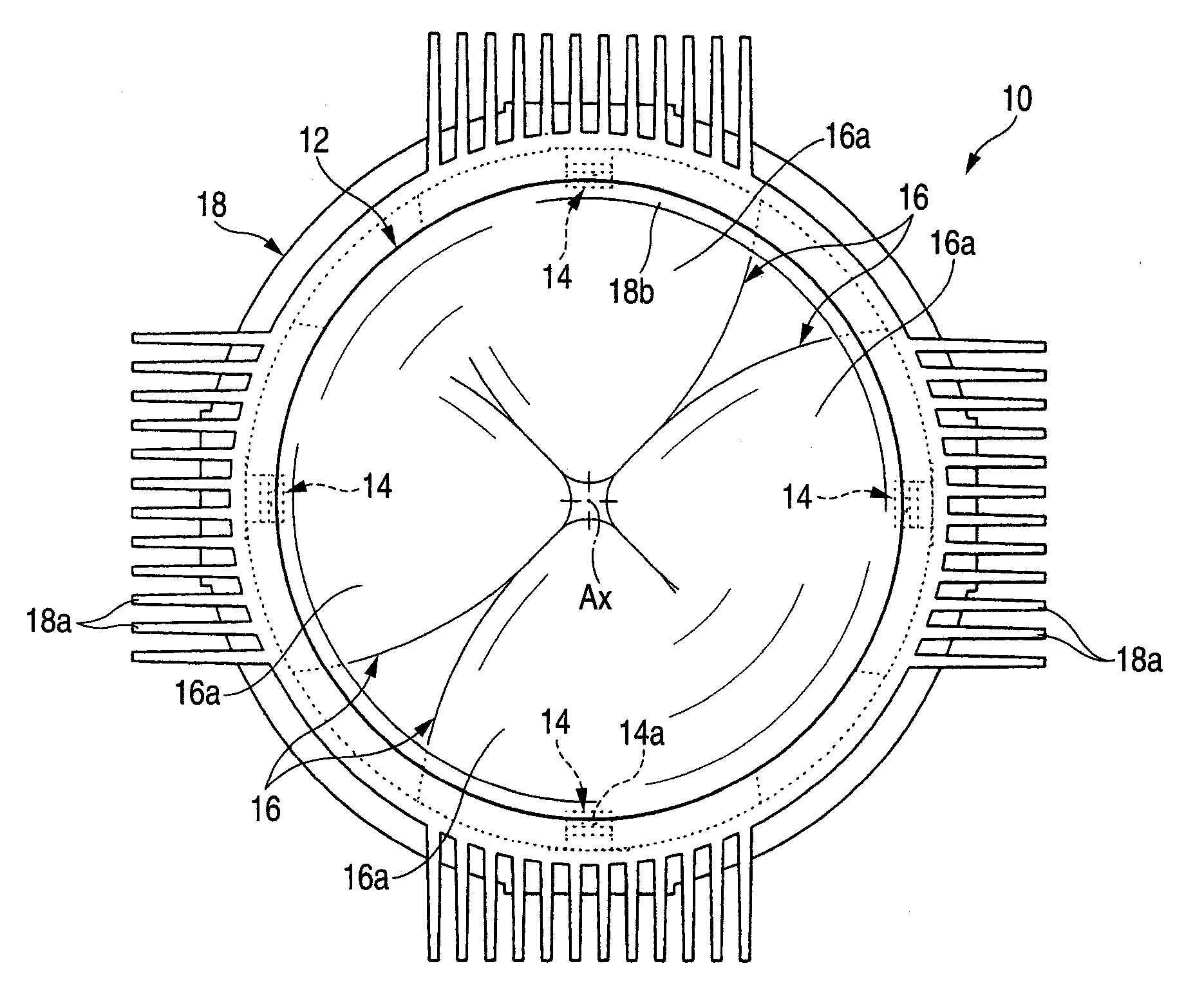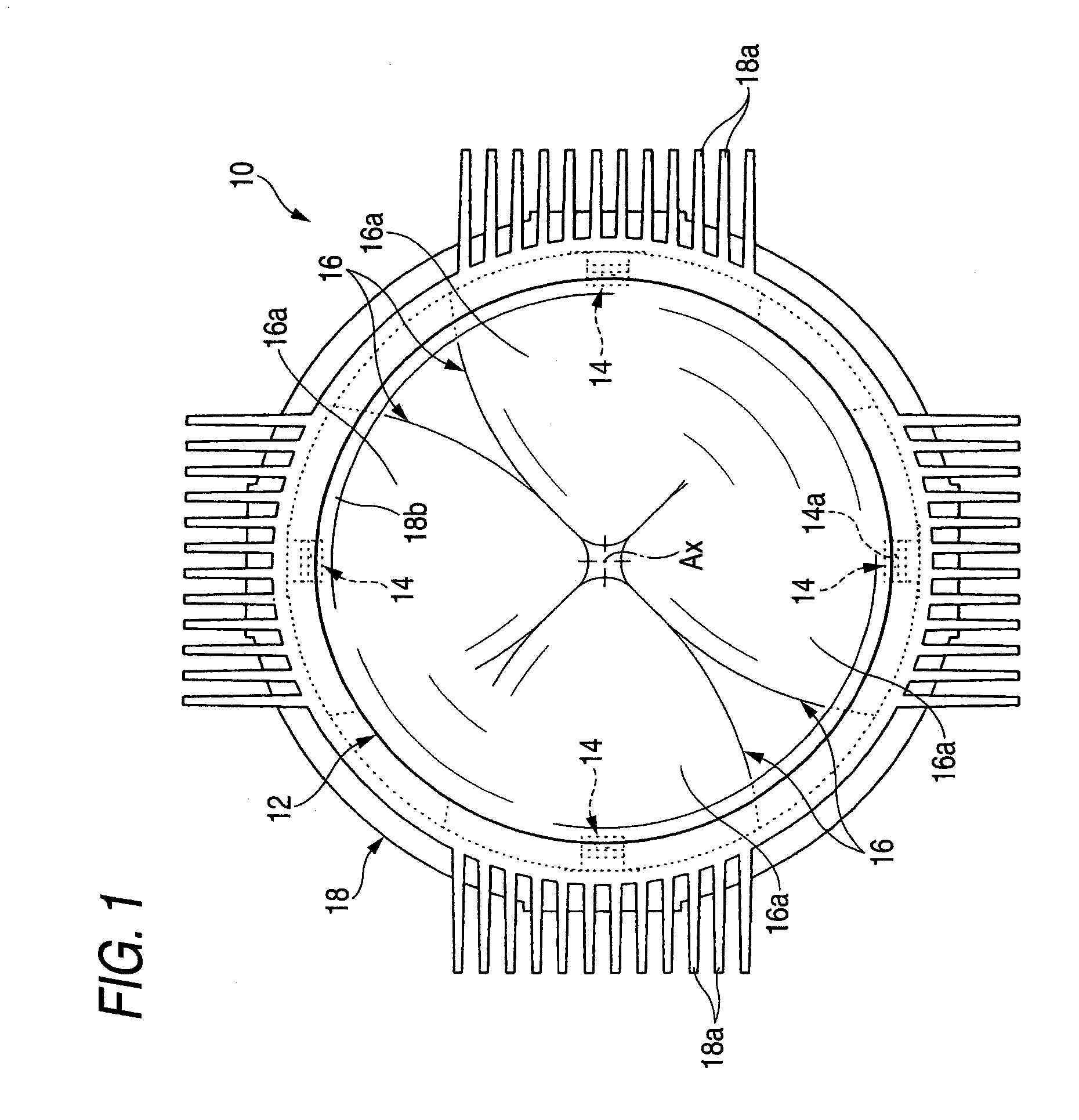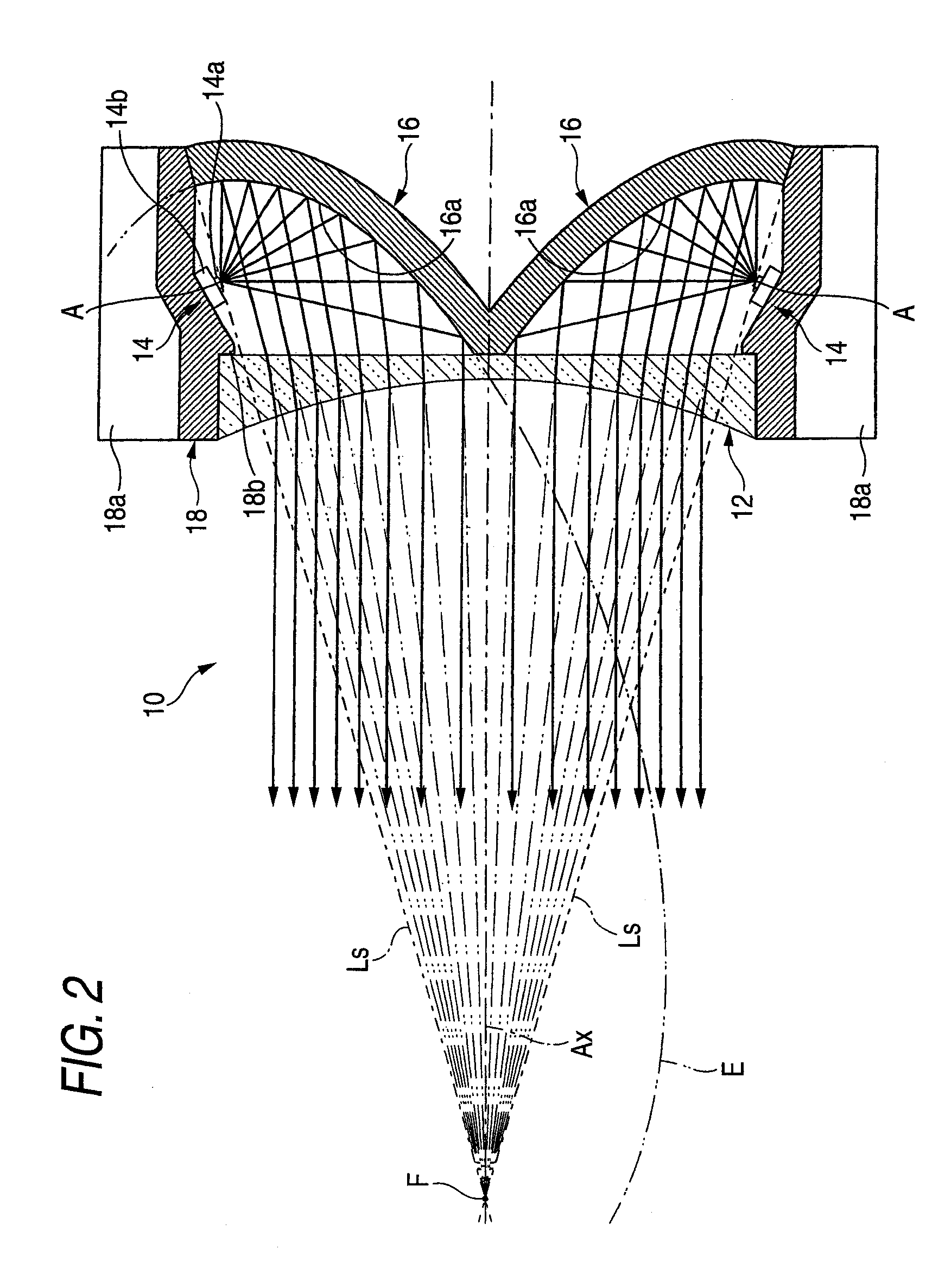Vehicle lamp
a technology for vehicles and lamps, applied in fixed installations, lighting and heating apparatus, lighting support devices, etc., can solve the problems of insufficient amount of light irradiation, difficult to configure lamps to be sufficiently slim, and inability to ensure the length of lamps in front-and-back directions. to achieve the effect of precise control of light distribution
- Summary
- Abstract
- Description
- Claims
- Application Information
AI Technical Summary
Benefits of technology
Problems solved by technology
Method used
Image
Examples
first exemplary embodiment
[0037]As shown in the FIGS. 1 and 2, a vehicle lamp 10 according to a first exemplary embodiment of the present invention includes a concave lens 12 disposed on an optical axis Ax extending in a front-and-rear direction of the lamp 10 (i.e., in a direction behind and in front of the page), four light emitting elements 14 disposed behind the concave lens 12, fourth reflectors 16, and a lens holder 18. The vehicle lamp 10 is used as a lamp unit of a vehicle headlamp in a state in which it is incorporated to enable a regulation of the optical axis for a lamp body (not shown). In that case, the vehicle lamp 10 serves to irradiate a light for forming a part of a high beam light distribution pattern in a state in which the optical axis Ax is disposed to be extended in a front-and-rear direction of the vehicle.
[0038]The concave lens 12 in this exemplary embodiment is a planoconvex aspherical lens in which a front side surface is a concave surface and a rear side surface is a plane, and is ...
second exemplary embodiment
[0061]FIG. 4 is a side sectional view showing a vehicle lamp 110 according to a second exemplary embodiment.
[0062]As shown in FIG. 4, the vehicle lamp 110 according to the second exemplary embodiment has a basic structure which is similar to that of the vehicle lamp 10 according to the first exemplary embodiment and is different from that in the first exemplary embodiment in that a concave lens 112 is a Fresnel lens.
[0063]Also in the case in which the structure according to the second exemplary embodiment is employed, it is possible to obtain the similar advantages as those in the first exemplary embodiment. By employing the structure according to the second exemplary embodiment, moreover, it is possible to reduce a thickness of the concave lens 112 itself, thereby promoting a reduction in the thickness of the lamp still more.
third exemplary embodiment
[0064]FIG. 5 is a front view showing a vehicle lamp 210 according to a third exemplary embodiment.
[0065]As shown in FIG. 5, the vehicle lamp 210 according to the third exemplary embodiment has a basic structure as that of the vehicle lamp 10 according to the first exemplary embodiment. However, in the vehicle lamp 210, two of the four reflectors, i.e., the upper and lower reflectors 216 shown in FIG. 5, have different structures from those in the first exemplary embodiment.
[0066]In other words, structures of the left and right reflectors 16 are the same as those in the first exemplary embodiment. However, for the upper and lower reflectors 216, a shape of a reflecting surface 216a is different from that of the first exemplary embodiment.
[0067]More specifically, the reflecting surface 216a of each of the reflectors 216 has a sectional shape taken along a vertical plane which is formed by the ellipse E as in the first exemplary embodiment, but the sectional shape is a curved surface o...
PUM
 Login to View More
Login to View More Abstract
Description
Claims
Application Information
 Login to View More
Login to View More - R&D
- Intellectual Property
- Life Sciences
- Materials
- Tech Scout
- Unparalleled Data Quality
- Higher Quality Content
- 60% Fewer Hallucinations
Browse by: Latest US Patents, China's latest patents, Technical Efficacy Thesaurus, Application Domain, Technology Topic, Popular Technical Reports.
© 2025 PatSnap. All rights reserved.Legal|Privacy policy|Modern Slavery Act Transparency Statement|Sitemap|About US| Contact US: help@patsnap.com



